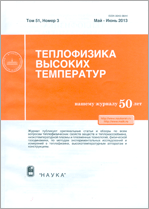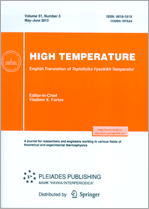|
This article is cited in 2 scientific papers (total in 2 papers)
Review
Two-phase flow boiling of nanofluids in mini- and microchannels
M. Kabira, J. Downerb, E. Prellerb, C. Tarauc, B. Yangd, J. Xub
a Kazuo Inamori School of Engineering, Alfred University, NY, USA
b Center for Advanced Manufacturing in Space Technology & Applied Research, University of the District of Columbia, Washington D.C., USA
c Advanced Cooling Technologies, Inc. Lancaster, PA, USA
d Department of Mechanical Engineering, University of Maryland, College Park, MD, USA
Abstract:
The effects of single-phase nanofluid flow in mini-/microchannels have been investigated both experimentally and numerically in the literature during the last decade. Almost all the studies show a similar trend by which the engagement of single-phase nanofluids to mini-/microchannels provides significant improvements in the thermal performance. However, there are only limited number of publications in the literature, which have experimentally focused on the heat transfer performance of nanofluids for two-phase flow boiling in mini-/microchannels. Moreover, there are some noticeably conflicting trends concluded by these experimental studies, particularly for the boiling heat transfer coefficient. In the present review, the key clue to figure out the contradictions reflected in the literature on the experimental measurements of boiling heat transfer coefficient is traced to the various deposition patterns of nanoparticles of different sizes on the boiling surface and subsequent changes in the morphology and boiling behavior as well. In addition, the crucial parameters of nanofluids in mini-/microchannels during flow boiling are identified and the effects of the parameters on the boiling heat transfer performance are comprehensively reviewed. The agreements and inconsistencies reported in the literature are also identified and discussed. Finally, a series of suggestions are provided for future experimental studies of nanofluids flow boiling to minimize the contradictory reports.
Received: 25.01.2020
Revised: 10.11.2021
Accepted: 15.02.2022
Citation:
M. Kabir, J. Downer, E. Preller, C. Tarau, B. Yang, J. Xu, “Two-phase flow boiling of nanofluids in mini- and microchannels”, TVT, 61:2 (2023), 285–314; High Temperature, 61:2 (2023), 262–287
Linking options:
https://www.mathnet.ru/eng/tvt11396 https://www.mathnet.ru/eng/tvt/v61/i2/p285
|


|





 Contact us:
Contact us: Terms of Use
Terms of Use
 Registration to the website
Registration to the website Logotypes
Logotypes








 Citation in format
Citation in format 
